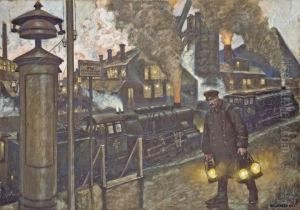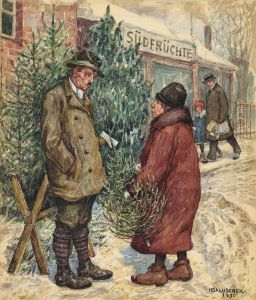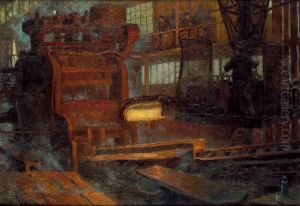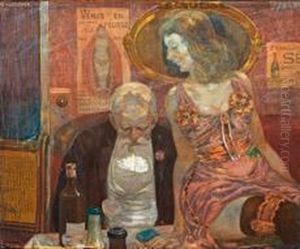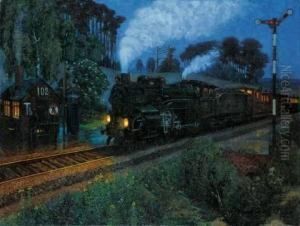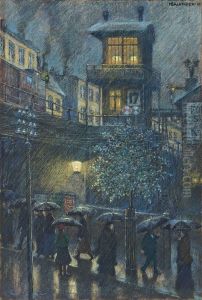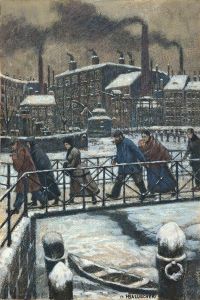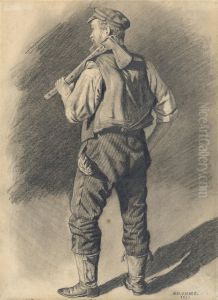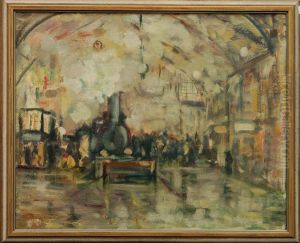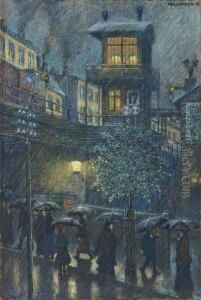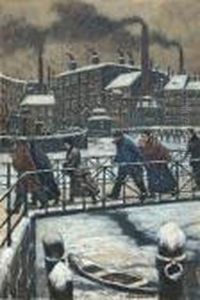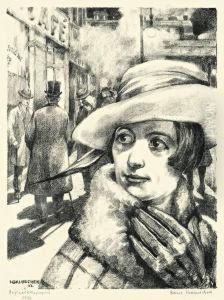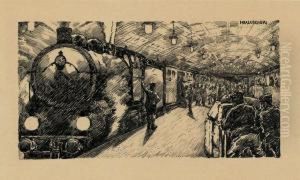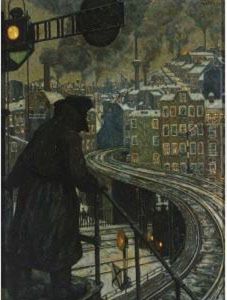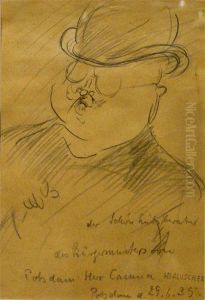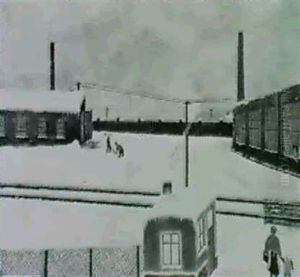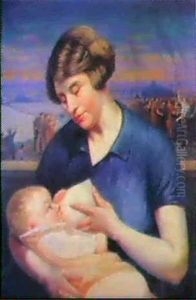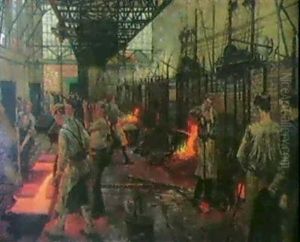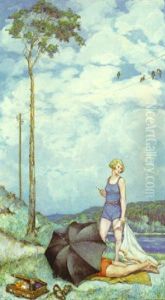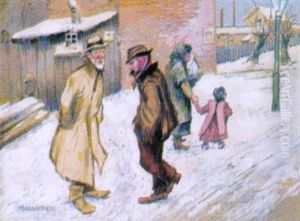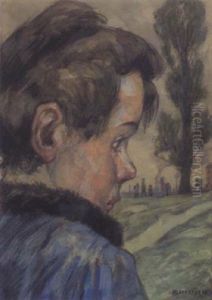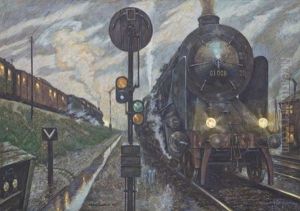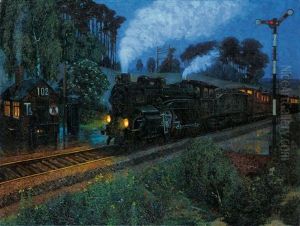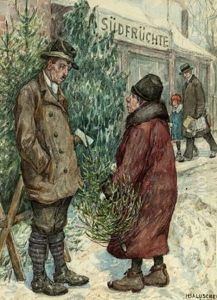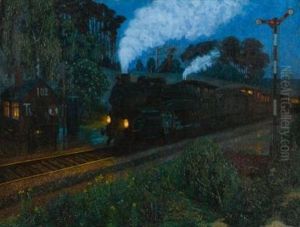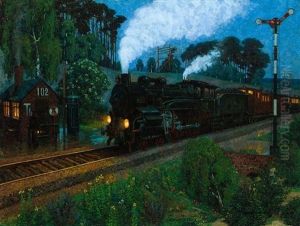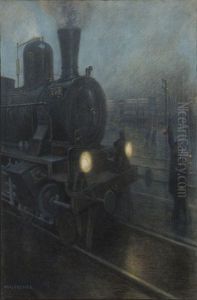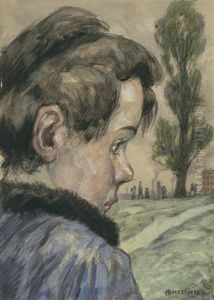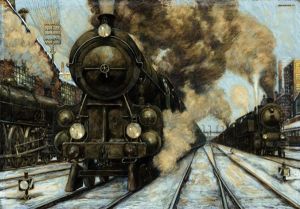Hans Baluschek Paintings
Hans Baluschek was a German painter, graphic artist, and writer, born on May 9, 1870, in Breslau, which was then part of the German Empire and is now Wrocław, Poland. He is primarily known for his critical portrayal of the industrialization of Germany and the social injustices of his time. Baluschek's work is often associated with the Berlin Secession, a group that sought to break away from the traditional academic art of the time.
Baluschek was deeply influenced by the rapid industrial growth and the living conditions of the working class in Berlin, where he moved with his family in 1887. He studied at the Royal Academy of Arts in Berlin from 1886 to 1895. Despite his academic training, Baluschek's style evolved towards a more realistic depiction of everyday life, focusing on the hardships faced by the working class and the impoverished. His paintings, illustrations, and prints often depicted the stark contrasts between the wealth of the industrialists and the poverty of the laborers.
Throughout his career, Baluschek was actively involved in the social and political issues of his time. He was a member of the Social Democratic Party and used his art as a means to critique society and advocate for social reform. His commitment to social issues is evident in works such as 'Poor City' (1900) and 'Railway Accident' (1902), where he highlights the human cost of industrial progress.
In 1898, Baluschek became a member of the Berlin Secession, contributing to the movement's efforts to challenge the conservative values of the art establishment. Despite his association with the Secession, his work was often criticized for its stark realism and social commentary, which some contemporaries found too controversial.
During World War I, Baluschek served as a war artist, documenting the impacts of the war on the German home front. After the war, he continued to produce art and literature that reflected his socialist beliefs, including children's books that aimed to educate the youth about social justice.
Hans Baluschek's legacy is that of an artist deeply committed to depicting the realities of his time, using his talents to critique societal injustices and advocate for change. He died on September 28, 1935, in Berlin, leaving behind a body of work that remains relevant in discussions about art, society, and the role of the artist as a social commentator.
